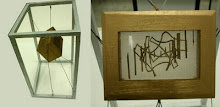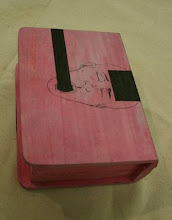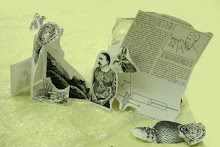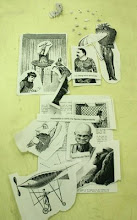Cezanne himself was very conscious of [a] problem problem for the painter--how to reconcile sensation and form without bullying your picture into a wilful unity, a triumph of personality at the expense of a truth to relationship.
But how to do this? I think the main way is by paying attention, to listening and looking:
I think, once more, of Wallace Stevens, and that entry in his Adagia which reads: 'The aspects of earth of interest to a poet are the casual ones, as light or colour, images.' By 'casual', I take it that he refers to the fortuitous nature of art--the way one may find its deepest meanings on a dull street corner, in an old pair of shoes, in the chance conjunction of the totally unforeseen and apparently unrelated. Suddenly things knit up--the canvas joins hands, in Cezanne's words. You cease to impose and you discover, to rephrase another aphorism of Stevens. And you discover apparently by chance. But what is chance? And if one accepts it, does it not cease to be chance?
Which brings me to Elizabeth Bishop. The students have been looking at Frank O'Hara's poems, which certainly exist in the fortuitousness Tomlinson talks about, especially as O'Hara moves through the city, picking up and putting into his poems snatches of conversation, proper names, and sensory perceptions that come flitting into his ever-roaming mind. This past Thursday, before we discussed O'Hara's poems, I read the following passage by Bishop, on the poet's "material":
i.e., immediate, intense physical reactions, a sense of metaphor and decoration in everything--to express something not of them--something I suppose spiritual. But it proceeds from the material, the material eaten out with acid, pulled down from underneath, made to perform and always kept in order, in its place. Sometimes it cannot be made to indicate its spiritual goal clearly (some of Hopkins, say, where the point seems to be missing) but even then the spiritual must be felt. Miss Moore does this--but occasionally. The other way--of using the supposedly "spiritual"--the beautiful, the nostalgic, the ideal and poetic, to produce the material is the way of the Romantic, I think, and a great perversity.
(The essay I gleaned this from can be found here.) We've been discussing all semester how to listen to the material, how to let it tell you where to take it, and something about re-reading O'Hara brought the above passage to mind. After reading it, I read my favorite of Bishop's poems, "At the Fishhouses," a poem that seems to nearly perfectly illustrate this process of paying attention giving way to "meaning."















































































No comments:
Post a Comment